Download Jupiter Worksheets
Click the button below to get instant access to these premium worksheets for use in the classroom or at a home.
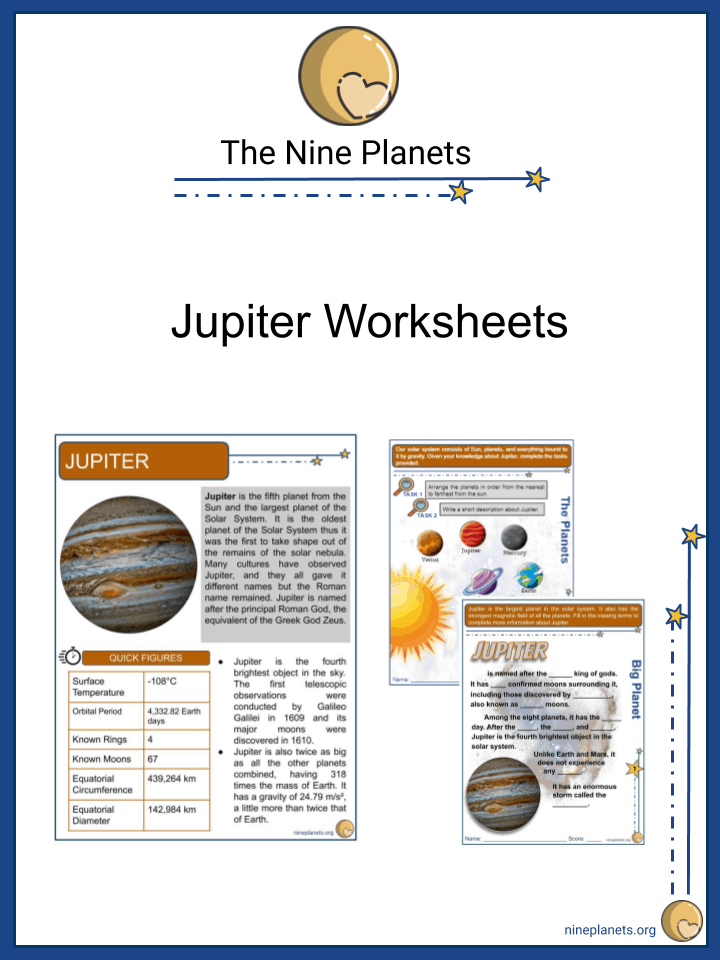
This worksheet can be edited by Premium members using the free Google Slides online software. Click the Edit button above to get started.
Download free sample
Not ready to purchase a subscription yet? Click here to download a FREE sample of this worksheet pack.
Resource Examples
Click any of the example images below to view a larger version.
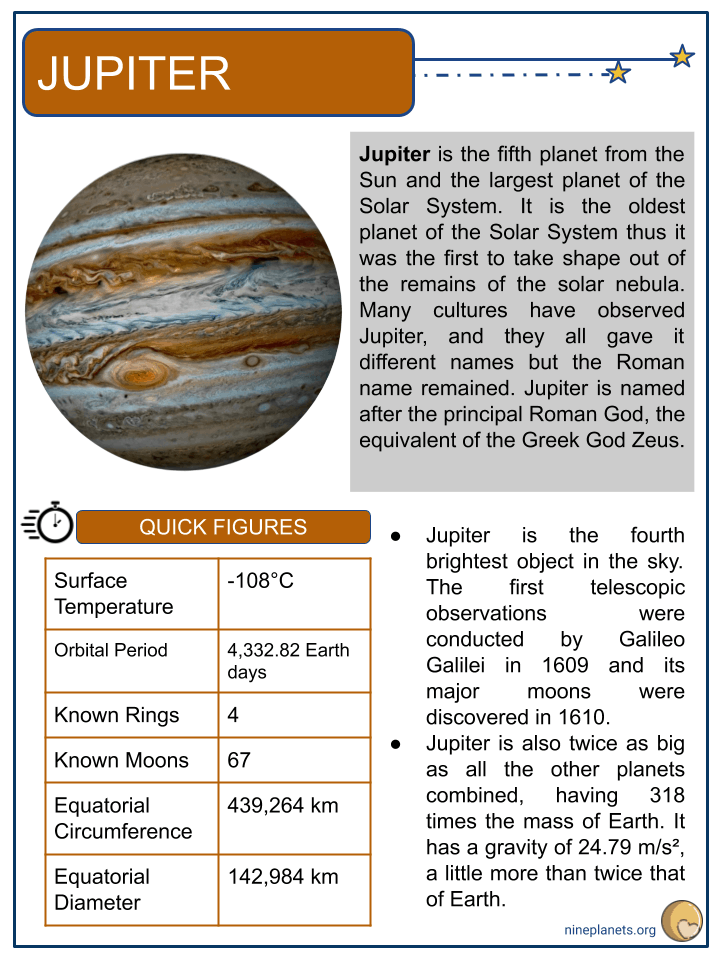
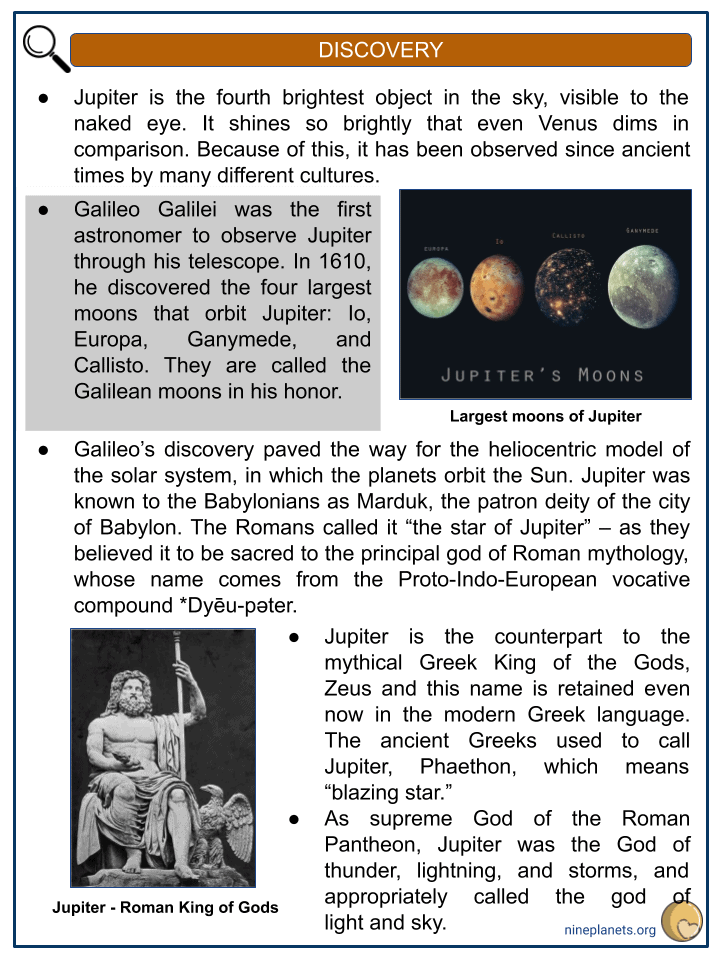
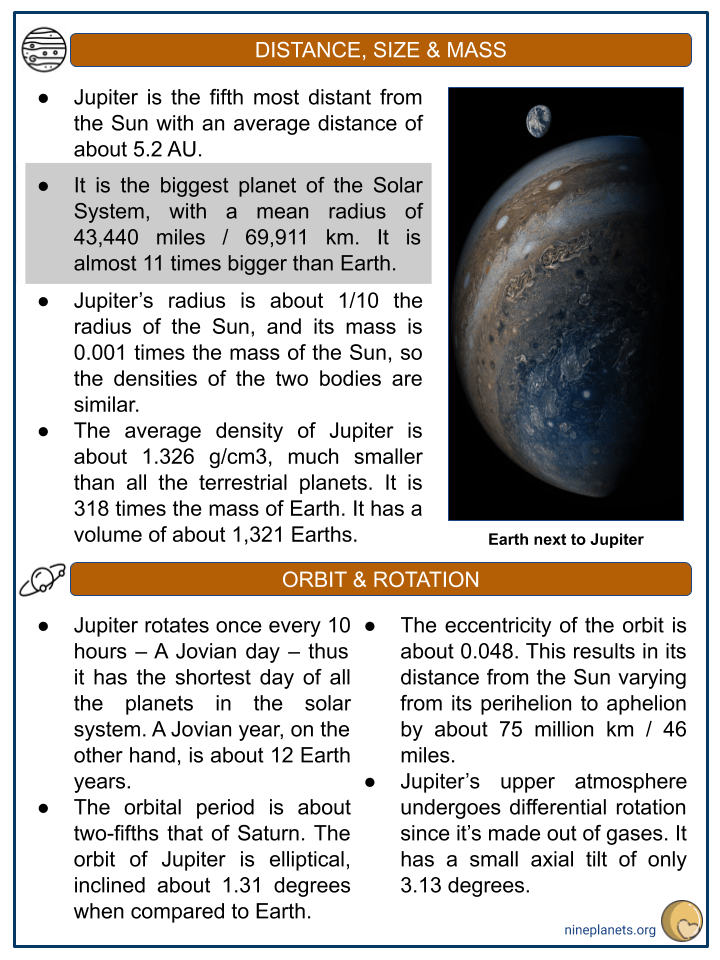
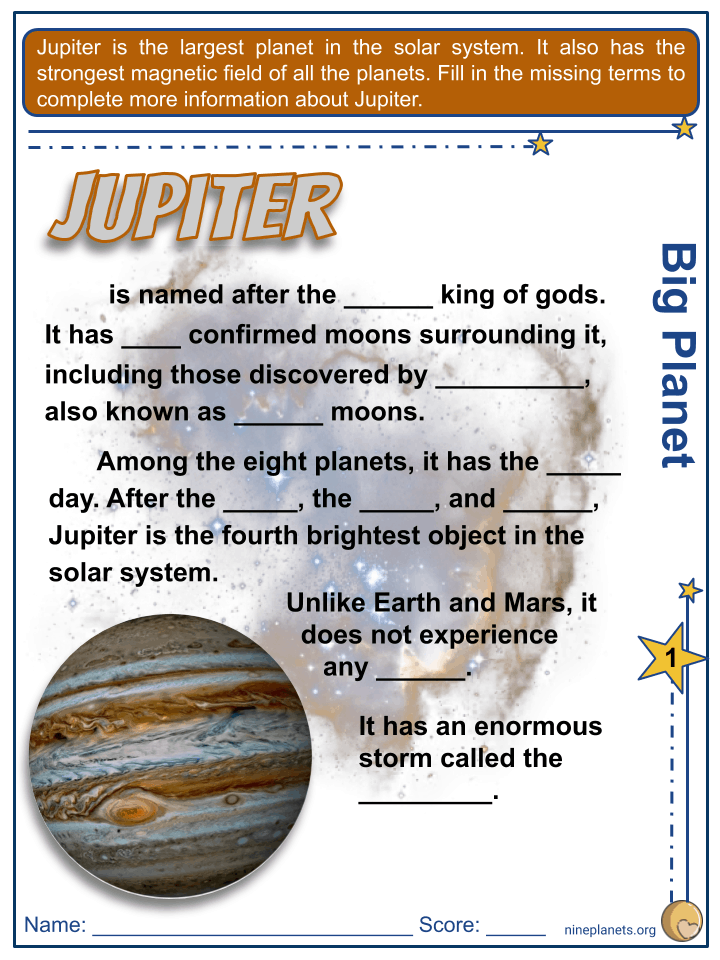
Key Facts & Information
- Jupiter is the fifth planet from the Sun and the largest planet of the Solar System. It is the oldest planet of the Solar System thus it was the first to take shape out of the remains of the solar nebula. Many cultures have observed Jupiter, and they all gave it different names but the Roman name remained. Jupiter is named after the principal Roman God, the equivalent of the Greek God Zeus.
- Jupiter is the fourth brightest object in the sky. The first telescopic observations were conducted by Galileo Galilei in 1609 and its major moons were discovered in 1610.
- Jupiter is also twice as big as all the other planets combined, having 318 times the mass of Earth. It has a gravity of 24.79 m/s², a little more than twice that of Earth.
Quick Figures
- Surface Temperature: -108°C
- Orbital Period: 4,332.82 Earth days
- Known Rings: 4
- Known Moons: 67
- Equatorial Circumference: 439,264 km
- Equatorial Diameter: 142,984 km
Discovery
- Jupiter is the fourth brightest object in the sky, visible to the naked eye. It shines so brightly that even Venus dims in comparison. Because of this, it has been observed since ancient times by many different cultures.
- Galileo Galilei was the first astronomer to observe Jupiter through his telescope. In 1610, he discovered the four largest moons that orbit Jupiter: Io, Europa, Ganymede, and Callisto. They are called the Galilean moons in his honor.
- Galileo’s discovery paved the way for the heliocentric model of the solar system, in which the planets orbit the Sun. Jupiter was known to the Babylonians as Marduk, the patron deity of the city of Babylon. The Romans called it “the star of Jupiter” – as they believed it to be sacred to the principal god of Roman mythology, whose name comes from the Proto-Indo-European vocative compound *Dyēu-pəter.
- Jupiter is the counterpart to the mythical Greek King of the Gods, Zeus and this name is retained even now in the modern Greek language. The ancient Greeks used to call Jupiter, Phaethon, which means “blazing star.”
- As supreme God of the Roman Pantheon, Jupiter was the God of thunder, lightning, and storms, and appropriately called the god of light and sky.
Distance, Size & Mass
- Jupiter is the fifth most distant from the Sun with an average distance of about 5.2 AU.
- It is the biggest planet of the Solar System, with a mean radius of 43,440 miles / 69,911 km. It is almost 11 times bigger than Earth.
- Jupiter’s radius is about 1/10 the radius of the Sun, and its mass is 0.001 times the mass of the Sun, so the densities of the two bodies are similar.
- The average density of Jupiter is about 1.326 g/cm3, much smaller than all the terrestrial planets. It is 318 times the mass of Earth. It has a volume of about 1,321 Earths.
Orbit & Rotation
- Jupiter rotates once every 10 hours – A Jovian day – thus it has the shortest day of all the planets in the solar system. A Jovian year, on the other hand, is about 12 Earth years.
- The orbital period is about two-fifths that of Saturn. The orbit of Jupiter is elliptical, inclined about 1.31 degrees when compared to Earth.
- The eccentricity of the orbit is about 0.048. This results in its distance from the Sun varying from its perihelion to aphelion by about 75 million km / 46 miles.
- Jupiter’s upper atmosphere undergoes differential rotation since it’s made out of gases. It has a small axial tilt of only 3.13 degrees.
Surface & Structure
- Jupiter does not have a solid surface, being comprised mostly out of swirling gases and liquids such as 90% hydrogen, 10% helium – very similar to the sun.
- It is not known if Jupiter has a core and recent analysis suggests that the atmosphere extends up to 3,000 km / 1,864 miles down, and beneath this is an ocean of metallic hydrogen going all the way down to the center.
- Atmosphere. The atmosphere of Jupiter is the largest planetary atmosphere in the Solar System, spanning over 5,000 km / 3,000 miles in altitude. It is perpetually covered with clouds composed of ammonia crystals and possibly ammonium hydrosulphide.
- The clouds are located in the tropopause and are arranged into bands of different latitude.
- Magnetosphere. The magnetic field of Jupiter is fourteen times stronger than that of Earth. It ranges from 4.2 gauss / 0.42 mT at the equator to 10-14 gauss / 1.0 – 1.4 mT at the poles.
- Because Jupiter is surrounded by plasma torus, produced by its strong magnetic field, it makes it very difficult for a spacecraft to approach the planet. Some zones are not so dangerous but the radiation is still present.
- Climate. Data suggests that the temperature on Jupiter varies from -145 degrees Celsius / -234 degrees Fahrenheit in the clouds to much higher temperatures near the planet’s centre. Some estimates conclude that it would get even hotter than the surface of the Sun.
- One of the key features of Jupiter is its Great Red Spot. A storm that’s existed since 1831, and possibly since 1665, this oval-shaped object is greater in size than Earth and rotates counterclockwise within a period of six days.
Moons
- Jupiter was the king of the moons, having a total of 79 known satellites. Out of the 79 satellites, 63 are less than 10 km / 6.2 miles in diameter, and have only been observed since 1975.
- The Galilean moons, Io, Europa, Ganymede, and Callisto are large enough to be seen from Earth with binoculars.
- Jupiter has both regular moons and irregular moons with further subdivisions.
- Regular Moons. These consist of the Galilean moons and an inner group of 4 small moons with diameters less than 200 km/124 miles. The Galilean moons orbit between 400,000 km and 2,000,000 km – 248,548 miles and 1,242,742 miles.
- Irregular Moons. These are small and have elliptical and inclined orbits. They are also thought to be captured asteroids or fragments of captured asteroids.
- 4 Groups of Irregular Moons:
- The Himalia group – clustered group of moons with orbits around 11-12 million km from Jupiter
- The Ananke group – a group with a retrograde orbit with rather indistinct borders
- The Carme group – they orbit an averages of 23 million km / 14 million miles from Jupiter
- The Pasiphae group – a group that covers all the outermost moons
Planetary Rings
- Jupiter has a faint planetary ring system composed of three main segments: an inner torus of particles known as the halo, a relatively bright main ring, and an outer gossamer ring.
- They appear to be made out of dust rather than ice as with Saturn’s rings. It is believed that the main ring is made of material ejected from the satellites Adrastea and Metis.
Did You Know
- When Jupiter was formed it had twice its current diameter.
- Jupiter is so massive that its barycenter with the Sun lies above the Sun’s surface at 1.068 solar radii from the Sun’s center. It is the only planet whose barycenter with the Sun lies outside the volume of the Sun.
- If Jupiter was 75 times more massive, it would probably become a star.
- If a person who weighs 100 pounds on Earth would somehow stand on the surface of Jupiter, that person would weigh about 240 pounds due to Jupiter’s gravitational force.
- Jupiter experiences almost 200 times more asteroid and comet impacts than Earth.
- Jupiter has been called the Solar System’s vacuum cleaner, because of its immense gravity well. It receives the most frequent comet impacts of all the Solar System’s planets.
- Jupiter may have been responsible for the Late Heavy Bombardment of the inner Solar System’s history.